Water pumps are critical components that keep liquid flowing through the coolant system. Gates has been manufacturing them for passenger vehicles for many years. Moreover, we have a successful track record in supplying heavy-duty water pumps in markets such as the US and Canada.
Relying on that extensive product expertise and our OE pedigree in the truck and bus sector in general, we will be expanding our FleetRunner range in October. Thus we will ensure that trucks and buses on EMEA roads will also be able to use and rely on Gates heavy-duty water pumps.
Reliable, high-quality components
FleetRunner heavy-duty water pumps will consist of mechanical and electromagnetic clutch types:
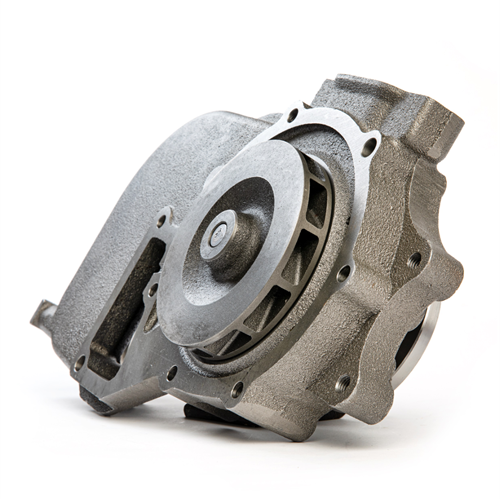
[mechanical Water Pump]
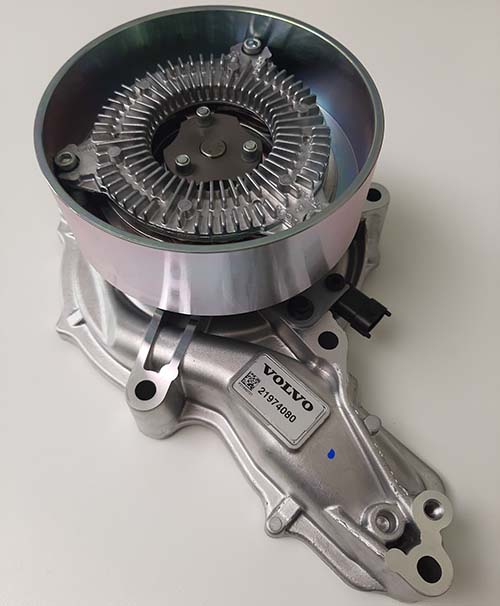
[Electromagnetic clutch type WP]
Each water pump unit will be made from premium-grade materials and will conform with ISO/TS 16949 and other international standards. We are able to ensure this through our use of computer-tooled manufacturing processes and strict quality controls on our assembly lines. Moreover, we have a rigorous leak-testing program in place for all seals, bearings and individual casings. A precisely balanced impeller ensures OE fit and function.
Clearly, the heavy-duty water pumps in the FleetRunner range will only strengthen our reputation for providing
reliable, high-quality components.
Gates integrated systems approach
The launch of our FleetRunner heavy-duty water pumps fits in squarely with the Gates integrated systems approach. This approach promotes the use of same-manufacturer components, to ensure user safety, optimal performance and minimal downtime.
FleetRunner heavy-duty water pumps will be ideal for a preventive maintenance strategy. You will be able to carry out a complete accessory belt drive system overhaul, using only heavy-duty parts by Gates. For instance, it is best practice to replace the thermostat when installing a new water pump when the water pump also contains the thermostat housing(s).
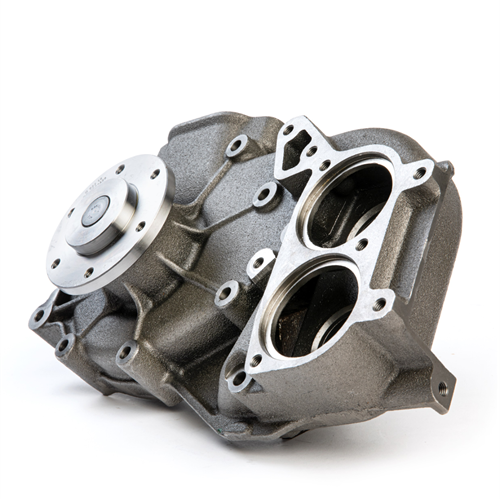
[WP]
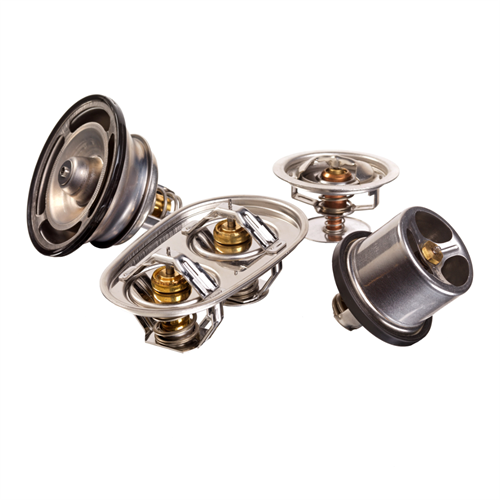
[Thermostats]
Webinars on heavy-duty water pumps
As an installer, you will benefit from a comprehensive level of technical support, in the form of direct training and webinars. These cover areas such as cooling system diagnostics and how to maintain optimum coolant condition. As a preview, we will discuss, here, the basics of water pump purpose and functioning, and share some tips on cooling system maintenance and on coolant additives.
1. The purpose of heavy-duty water pumps
Internal combustion engines burn fossil fuels to release power, but only about one third of this energy is actually used to move the vehicle. The remaining two thirds end up as excess heat, with modern diesel engines even generating more heat than previous models. One third of that heat escapes through the exhaust system, while the remaining third heats up the engine components.
To absorb this excess heat that has been retained within the engine, a heat transfer fluid is required. This fluid circulates through the cooling system, thereby transferring the heat to the radiator, which dissipates it through cooling fins into the atmosphere. It is the water pump’s role to ensure coolant flow is maintained within this system.
2. Cooling system and water pump maintenance
Approximately 40% to 50% of engine down time is related to failures within the coolant system. Hence, correct system maintenance is key to preventing costly repairs and to ensure that the water pump can circulate coolant through the system effectively. Such maintenance includes:
- cooling system flushing
- checking coolant condition (concentration, and therefore freezing point – using a refractometer such as the Gates 91001, and hecking pH with a test meter or pH strips)
- installing a new coolant filter
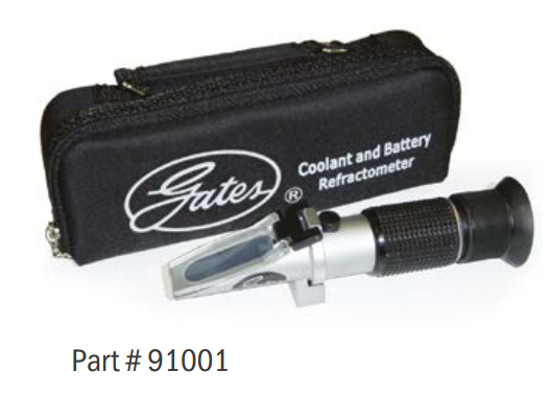
[Refractometer]
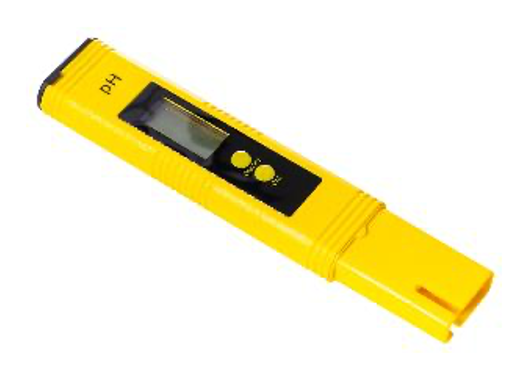
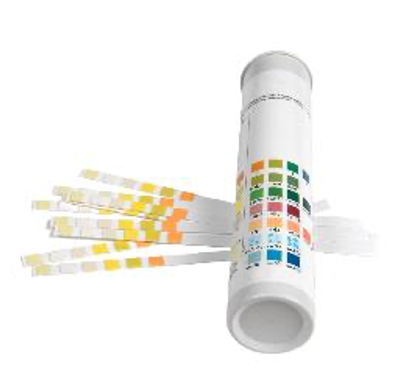
[pH test kit]
Even if coolant filter(s) are incorporated in the system, it is still best practice periodically to drain and flush the system. After all, although filters can capture larger particles of contaminant, sediment can still accumulate in the system. We cannot underline enough, the importance of flushing out the cooling system – not only during maintenance, but after component installation as well. Inadequate flushing can ruin a newly installed water pump, resulting in warranty problems.
Not only does deposited sediment act as an insulator, retaining heat in the system and preventing its dissipation, but the sediment can also find its way into the water pump. There it causes damage to the faces of the mechanical seal and, subsequently, continuous weepage from the pump.
It is easy to prevent system contamination (hence damage to the mechanical seals) by performing a complete cooling system flush with the PowerClean™ Flush Tool. This user-friendly tool dislodges accumulated sludge and scale deposits without using harsh chemicals.
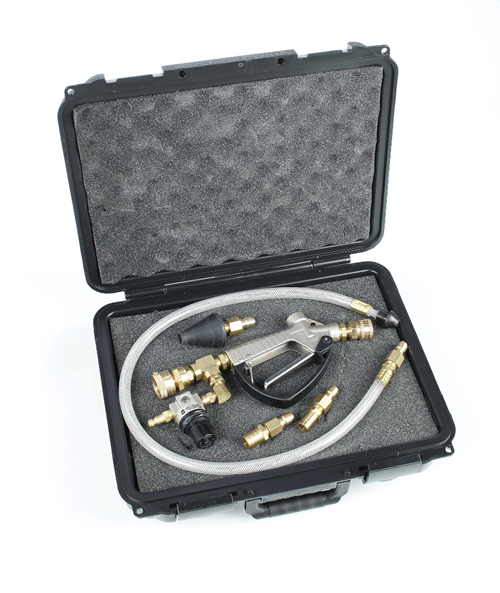
[Flush tool]
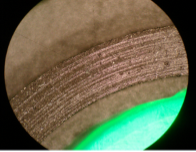
[Mechanical seal damage]
The benefits of a clean cooling system speak for themselves:
- more efficient engine cooling
- quicker engine warm up
- better fuel consumption
- longer lasting components
- reduced comebacks
- increased customer confidence
3. Supplemental Coolant Additives (SCAs)
There are many different additive packages or inhibitors that protect the engine and cooling system against corrosion, erosion, cavitation and scale. Additives help to buffer the coolant solution, thereby maintaining its alkaline pH.
3.1. Watch the SCA levels
Modern diesel engines include emission-reduction systems such as Selective Catalytic Reduction (SCR) and cooled Exhaust Gas Recirculation (EGR). These and other components also require cooling from the coolant system, accelerating the depletion of the coolant additives or Supplemental Coolant Additives (SCAs).
So, it is important to ensure that correct SCA levels are maintained. There are a few different types of SCAs available, liquid format or chemically pre-charged pellets contained within coolant filter cartridges. The latter are available with different rates of chemical release – relating to longer or shorter system maintenance requirements. Always check the vehicle manufacturer’s and the coolant supplier’s data for the correct specifications of SCA required.
Incorrect SCA levels can cause cavitation issues. Vapour cavities are ‘bubbles’ in the coolant that collapse with explosive force, pockmarking the pump’s internal components. The pockmarked areas then corrode away.
The bubbles form at the coolant inlet of the pump. As the pressure increases in the system, the bubbles implode and cause harm. To help prevent this, thoroughly flush the cooling system before installing a new pump. Afterwards, refill the system with the correct vehicle manufacturer’s recommended coolant and/or SCA additive packages.
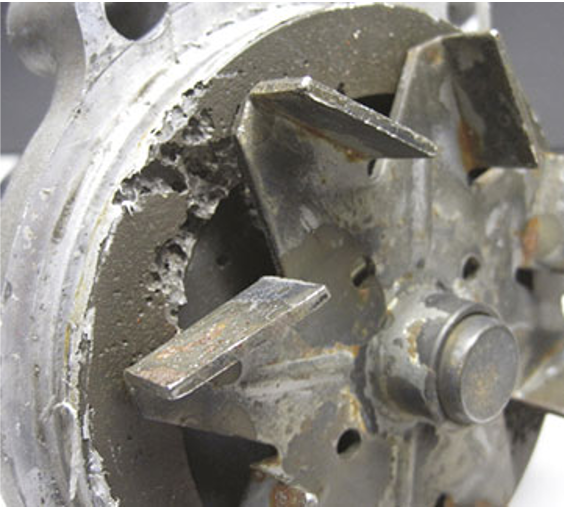
[Cavitation]
3.2. Avoid coolant mixing
Different types of coolant exist, such as IAT (Inorganic Acid Technology), OAT (Organic Acid Technology) and HOAT (Hybrid Organic Acid Technology). It is essential to use the correct coolant type to prevent coolant contamination within the system. Coolant filters are available with and without pre charged SCA additives.
Mixing incompatible coolant technologies can lead to the formulation of a gel-like substance in the cooling system, which can damage water pump mechanical seals, radiators, heater cores, etc..
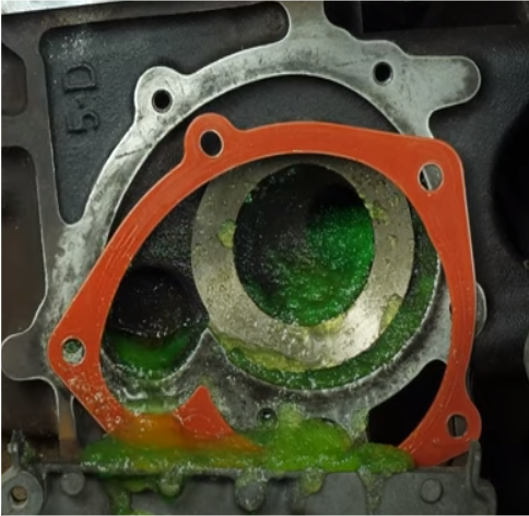
[Result of mixing incompatible coolant]
More technical support coming up
Keep an eye on our webinars page, as, in September, we will be launching both pre-recorded technical training sessions in nine languages and live webinars covering topics such as:
- How does a water pump work
- How does a mechanical seal work
- What are the differences between mechanical and electro-magnetic water pumps
- How to prevent and remedy water pump failure
Also make sure to check our technical article on do’s and don’ts for water pump installation.
Further water pump launches
Our range of FleetRunner heavy-duty water pumps will be able to cover over six million trucks and buses on EMEA roads from day one. Yet we will continue to invest our experience in OE drive systems, our water pump manufacturing expertise and heavy-duty drive systems knowledge into the development of new part numbers. More specifically, we are planning monthly launches of heavy-duty water pumps, in line with customer and market demand.